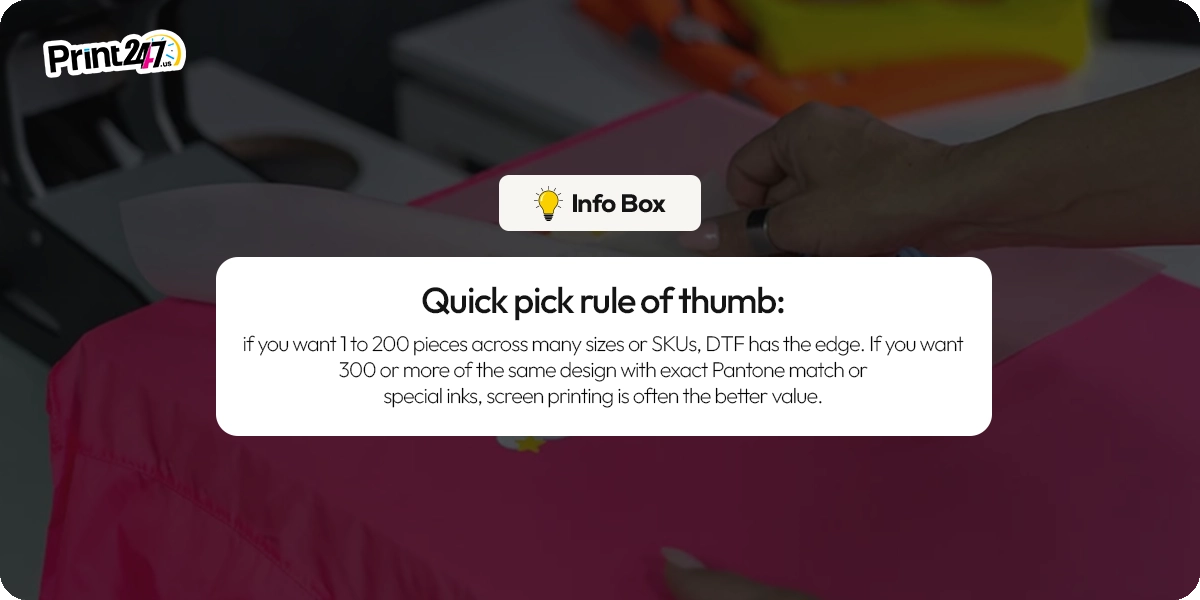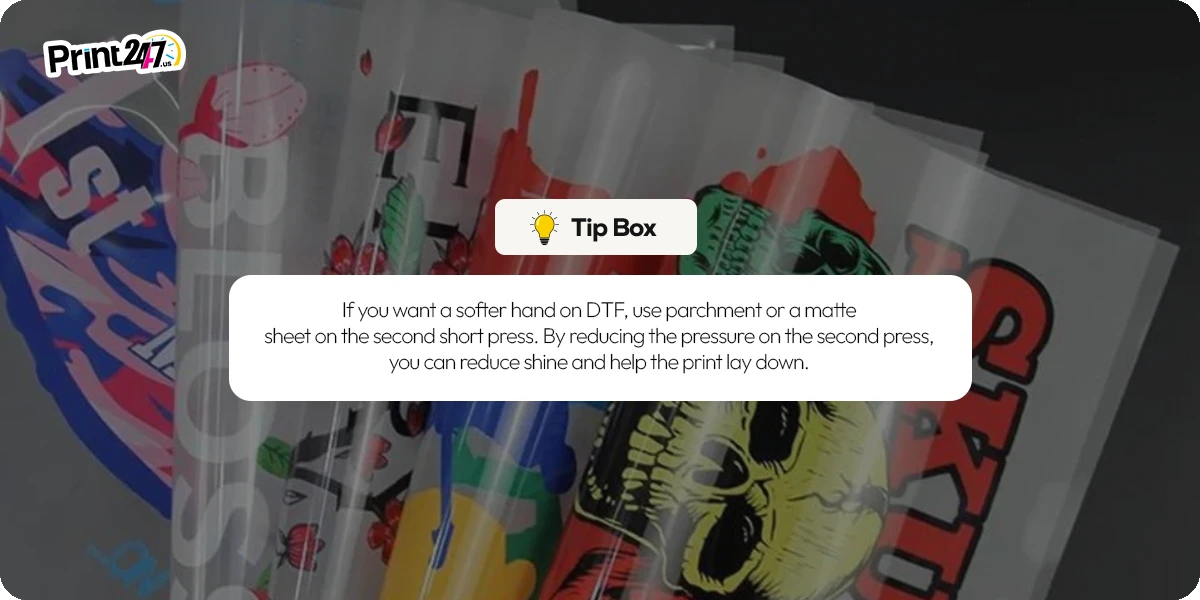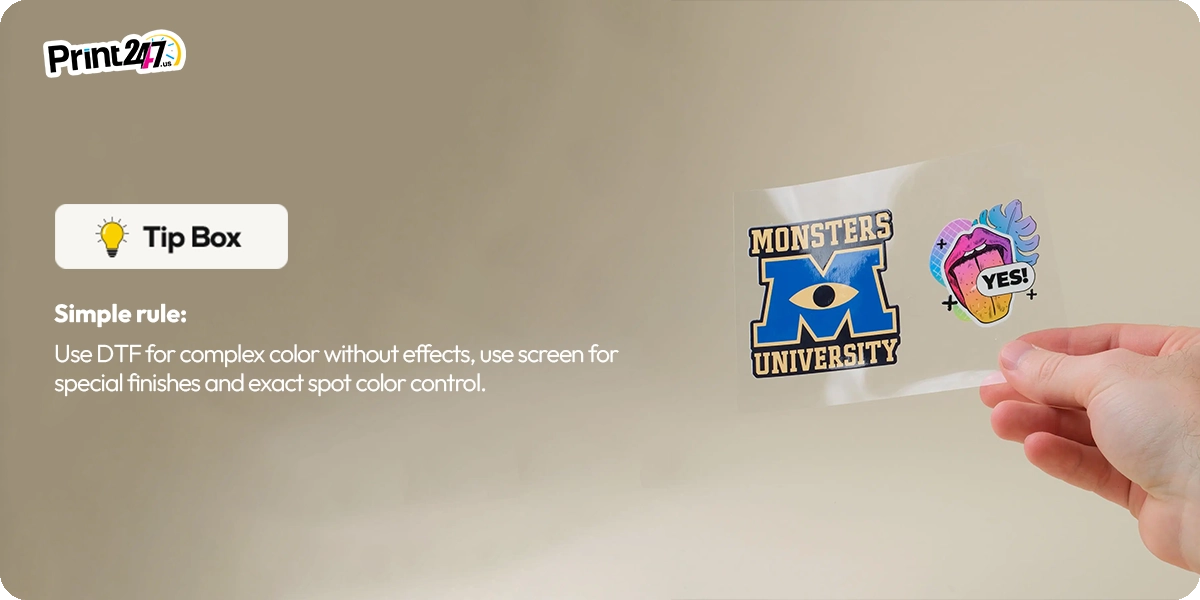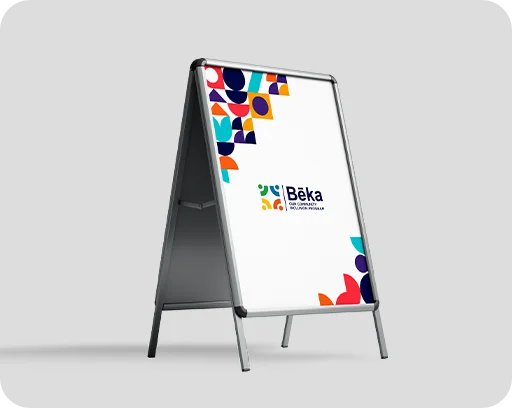DTF vs Screen Printing: Which Reigns Supreme For Custom Prints?
.jpg)
DTF printing is the latest technique that involves printing directly onto a film using a software and printer. It’s best for multi-color designs and small runs. Screen printing is the traditional method for printing that works for bulk orders with simple designs. Whenever they are cured correctly, both are durable. Choose a method that fits your design, order size, and fabric.
Creating sharp, long-lasting prints is crucial to moving products and building your brand. In many cases, the decision comes down to choosing between DTF and screen printing. These two types of printing are the top choices for teams that need clear color, repeatable results, and smart costs. DTF stands for direct to film printing and makes sense for short runs, photo‑heavy art, and mixed fabric orders. Screen printing shines on bulk orders, exact Pantone matches, and special inks that add texture or sheen.
We have written this guide in which you will get a lot about these two printing techniques. We will discuss how each process works, where each wins, and how to pick based on your art, fabric, budget, and timeline. Whether you sell screen printed T shirts, uniforms, merch for tours, or branded totes, this walkthrough helps buyers, operations, and brand managers make a call with confidence.
DTF vs Screen Printing - A Quick Comparison Table
Here’s a quick comparison table that clearly helps you get all the information about DTF and screen printing techniques.

What is DTF Printing and How it Works?
Direct to film printing uses a DTF machine to print ink onto a clear film. Compared to other printing methods, this one offers lower setup costs, allowing for vibrant colors, intricate designs, and durable prints that withstand repeated washes. DTF handles full color art, small detail, and mixed fabric orders with ease.
How DTF Printing Works?
First, your art is sent to a RIP that lays down CMYK plus white ink on a PET film. While the ink is still wet, an adhesive powder (like magic dust) coats the print. The film passes through a small oven that melts and gels the powder. This creates a ready‑to‑press transfer.
Next, the operator places the film on the fabric and uses a heat press to apply time, temperature, and pressure. The film is peeled, then often pressed again for better hand feel and wash strength. Because the image sits on a film before pressing, you can press the same sheet on many items with consistent results.
Pros
Handles tiny text, barcodes, and fine gradients
Works on many fabrics including cotton, poly, and blends
Easy color changes and variable data for names or numbers
Low setup cost for short runs and frequent art swaps
Fast reorders by printing more transfers and pressing
Good edge definition on small logos and left‑chest marks
Clean process with a small footprint in the shop
Works well for complex photos and multicolor art
Cons
Film feel can be more noticeable on large solid areas
Limited access to special effect inks and textures
Heat press step can slow very large orders
Poor cure or press settings can cause lifting at edges
Polyester dye bleed must be managed with blockers or settings
Not ideal for high‑stretch fabrics without the right film
Gloss level is mostly set, fewer finish options
Transfer storage needs care to avoid moisture issues

What is Screen Printing and How Does it Work?
In screen printing, ink is pushed through a mesh screen onto the garment. Each color gets its own screen. Shops use plastisol or water‑based inks, sometimes hybrid inks. The print is flashed or dried between colors, then fully cured in a conveyor dryer. Screen printing equipment scales well for bulk orders.
How Screen Printing Works?
First, your art is separated into spot colors. Each color is imaged onto a coated screen using exposure. The press is set up with the screens in order, and off‑contact, squeegee durometer, and angles are dialed in. An underbase may be used on dark fabrics for color pop.
During production, ink is pulled through each screen onto the shirt. A flash unit gels layers where needed. After all colors are printed, the garment runs through a conveyor dryer to cure the ink. A good press team can hold tight registration, keep ink film thin, and achieve a very soft hand.
Pros
Very low unit cost at higher volumes
Exact Pantone matching and brand color control
Many special effects such as metallic, puff, suede, high density
Can achieve very soft hand with water‑based on light garments
Proven durability with correct cure and wash care
Fast once set up, ideal for bulk production
Works well for bold logos and solid areas
Wide press sizes for large prints on tees and event banners
Cons
Higher setup time and cost for small runs
Each color adds screens, time, and risk of mis‑registration
Gradients need halftones and skill to look smooth
Variable data is not practical on press
Polyester and heat‑sensitive fabrics need controls to avoid dye bleed
Storage and chemicals for screens and cleanup
Press footprint and power needs are significant
Reorders need screens or re‑burn, which adds steps
Whatever method you use for printing, the key to creating durable prints is to care for them properly. Both screen printing and DTF printing are capable of producing quality prints. However, screen printing uses plastisol inks which tend to last longer than water-based inks used in DTF printers. Finally, the decision regarding screen printing or DTF depends on the specific needs and preferences of each business.
How to Choose the Right Method (DTF Printing OR Screen Printing)
.webp)
The decision between DTF printing and screen printing ultimately depends on four main factors: the complexity of the design, the quantity, the fabric, and the budget.
In this section, we are going to discuss some sections that help you choose the right printing techniques if you’re stuck in DTF vs screen printing choice.
#1 - Order Size, SKU Mix, and Total Cost Across Short Runs and Bulk
Start with your numbers. DTF usually gives a lower total cost. You skip screens, so there is no setup charge per color. That helps small purchase orders and frequent art updates. Printing on demand for microdrops or test designs using DTF transfers can keep inventory low and cash light.
If your order is large and steady, screen printing pulls ahead. Setup cost spreads over hundreds or thousands of units. Press speed is high once dialed in, so your cost per unit drops fast. First bulk is typically run on press, then DTF transfers are kept for late add-ons or size filling. Hybrid models balance cost and flexibility.
#2 - Artwork Style, Color Count, Gradients, and Special Effects
Match the method to your art. Photo art, fine gradients, and thin lines favor DTF. You get full color without adding cost per color. Variable data such as names or jersey numbers is simple because the film is printed, not screened. Leading printing and packaging suppliers like Print247 use variable printing techniques for flyers and postcards printing.
Logos with bright colors, spot inks, or special inks tend to be more suitable for screen printing. Whether you need metallic shimmer, gloss clear,high density, or a soft vintage feel with water based ink, a good press team can deliver it with screen printing.

#3 - Fabric and Product Mix, Heat Limits, and Placement Challenges
Not all fabrics behave the same. Therefore, different techniques are used for printing the fabrics. For example, DTF handles cotton, blends, and many polyester performance knits. It also sticks well to many non‑apparel items such as tote bags and some caps, as long as the surface is fairly flat and can take heat and pressure.
On the other hand, screen printing loves cotton and cotton‑rich blends. On polyester you need low‑bleed inks and lower cure heat with longer dwell time. That means a skilled press team and good temperature control. In most cases, the use of a transfer press, including DTF or screen print transfers, is safer and more consistent.
Quick Tip: Press two or three samples of each fabric with your chosen method, then wash and stretch. Let the fabric guide the final pick.
#4 - Production Speed, Lead Times, Reorders, and Stock‑Outs
Timelines matter when there is mass production of any product packaging . When you need units out the door fast and the art is complex, DTF is often quicker. The reason is that you skip screen coating, exposure, and press setup.
For large programs with firm dates, a dialed‑in screen shop is a machine. Once the press is running, outputs per hour are hard to beat. If you know the order well in advance and want the lowest unit cost, schedule screen printing and allow room in the timeline for setups and drying. Many teams blend both.
You should always have a stack of DTF transfers on hand when you need unusual sizes or damaged replacements. Thus, a hybrid approach can prevent stockouts while ensuring cost targets.
Final Thoughts
The decision between DTF and screen printing should not be based solely on your choice. It's all about picking the right printing technique for the job you've got today. In short, use DTF when you need many looks across small runs, fast changes, or variable data. Use screen printing when you need bulk output, exact Pantone colors, or special inks with a soft hand. Many brands use both and get the best of each.
Before you wrap up your holiday projects, you may also need packaging that looks sharp on shelf. For gift sets, order custom packaging from Print247. We are a leading packaging supplier in the United States with free design support, eco‑friendly materials, fast shipping, and physical samples that help you verify size and print before you scale.
FAQs
Can I use DTF on nylon bags, caps, or jackets that do not like high heat?
In general, yes, if the fabric tolerates the press settings and the film is designed for the surface. In many cases, nylon items require lower temperatures and a longer time to dry. Try the seams on a spare piece, and consider using a press pillow. You may be able to get better results by using a screen print transfer made from nylon if heat limits are strict.
Do gradients and photo art print better with DTF or on press?
Due to the fact that DTF prints CMYK plus white on film, it handles photo art and smooth gradients very well. It is possible to do it by screen printing if you have halftones and a little skill, but it adds prep time. Often, DTF is faster and more consistent when swapping art or combining different images.
How do screen print transfers compare with DTF transfers for pop‑up stores?
Heat is used to apply screen printing transfers using plastisol ink produced on the press. They are similar to traditional screen prints and are suitable for larger runs of the same artwork. With DTF transfers, you can create many different designs and make quick changes. With the right heat press, both can be easily pressed on-site.
Which method is better for tight Pantone targets across multiple plants?
The strength of screen printing lies in its ability to match exact spot colors. Measure and mix inks to Pantone standards, then share cure and press specifications across plants. Even though DTF can profile color well, CMYK builds may differ from one device to another.
What is the best plan for mixed orders that include shirts, hoodies, and tote bags?
Use screen printing for core logo runs on tees and hoodies if volumes are high. Use DTF for small logos on totes and add‑on sizes. Keep a small bank of transfers for late orders and field needs. This blend keeps unit costs down and response times quick.


















































.jpg)
.jpg)
.jpg)